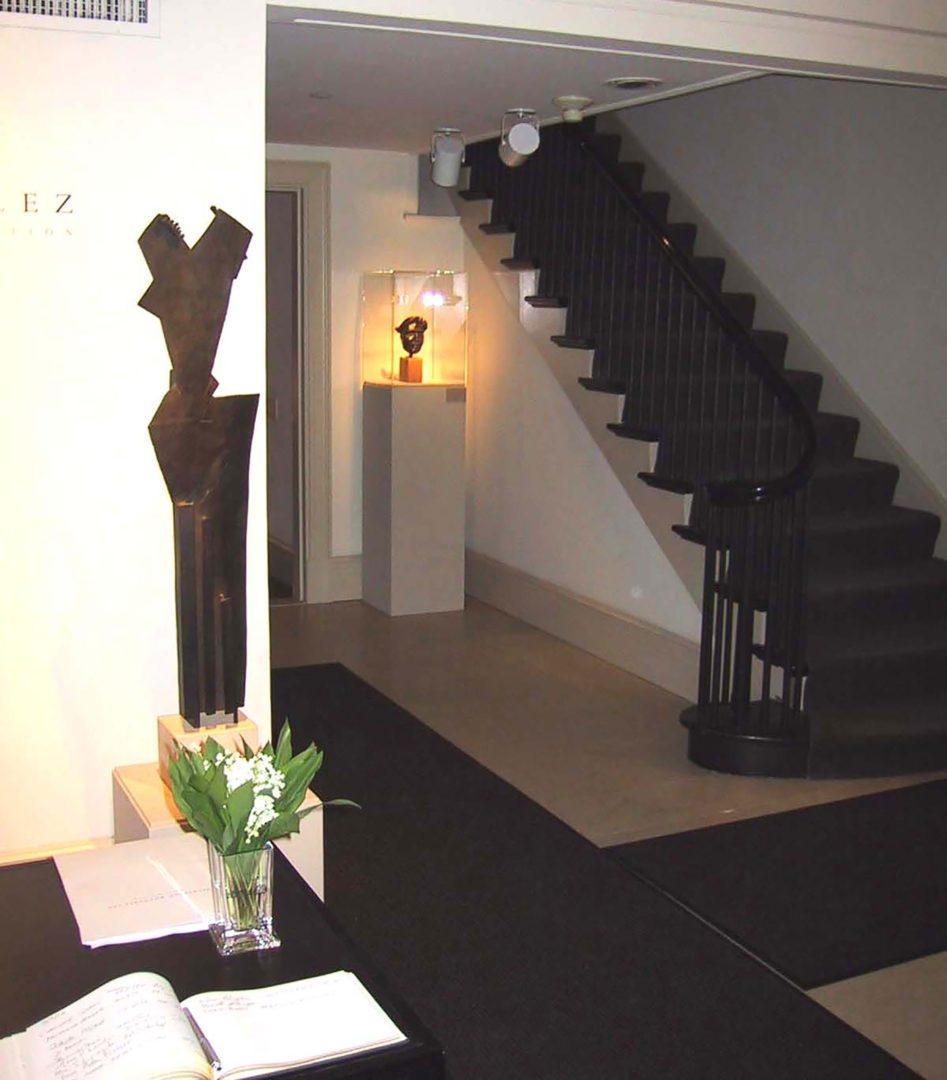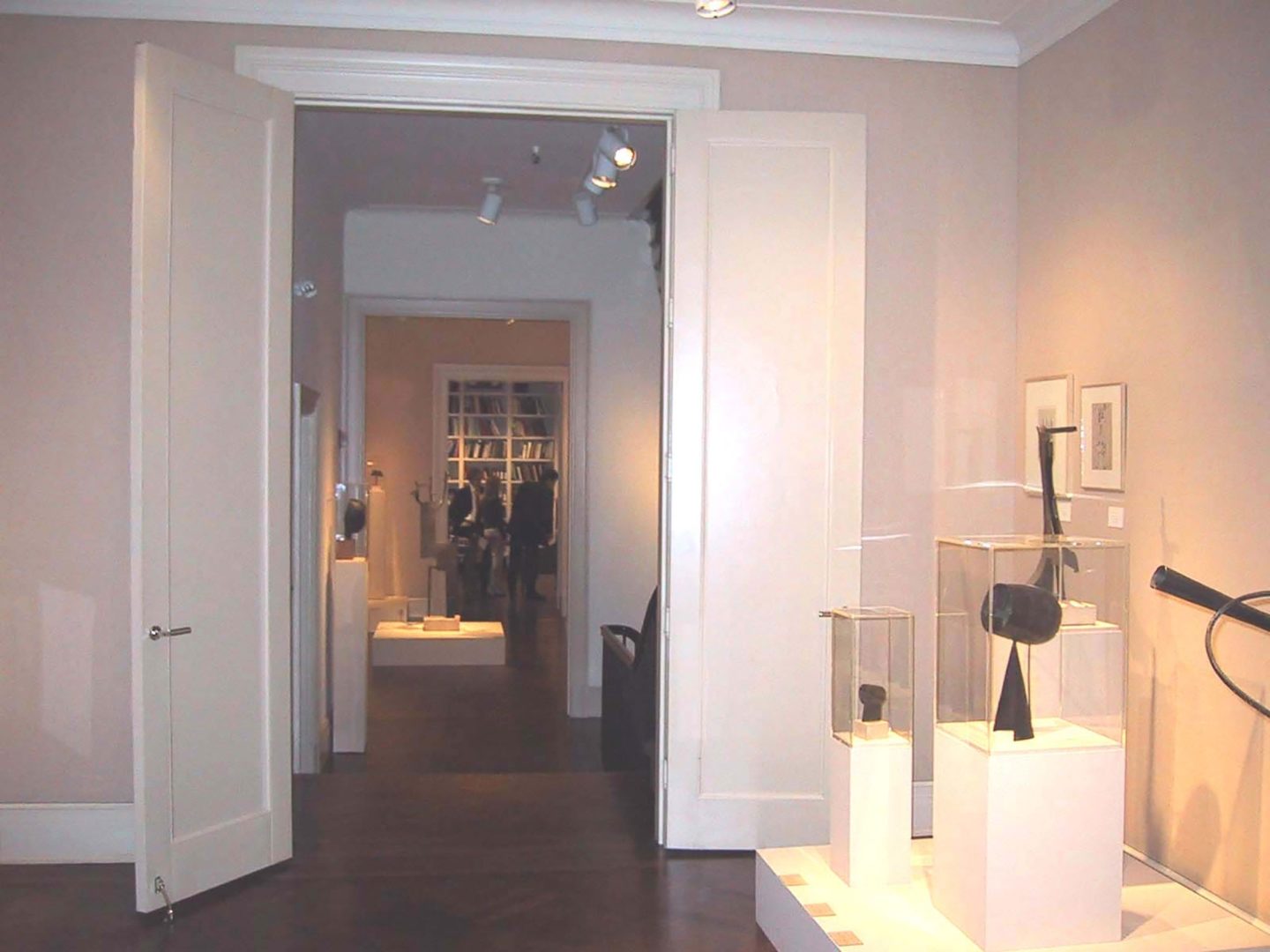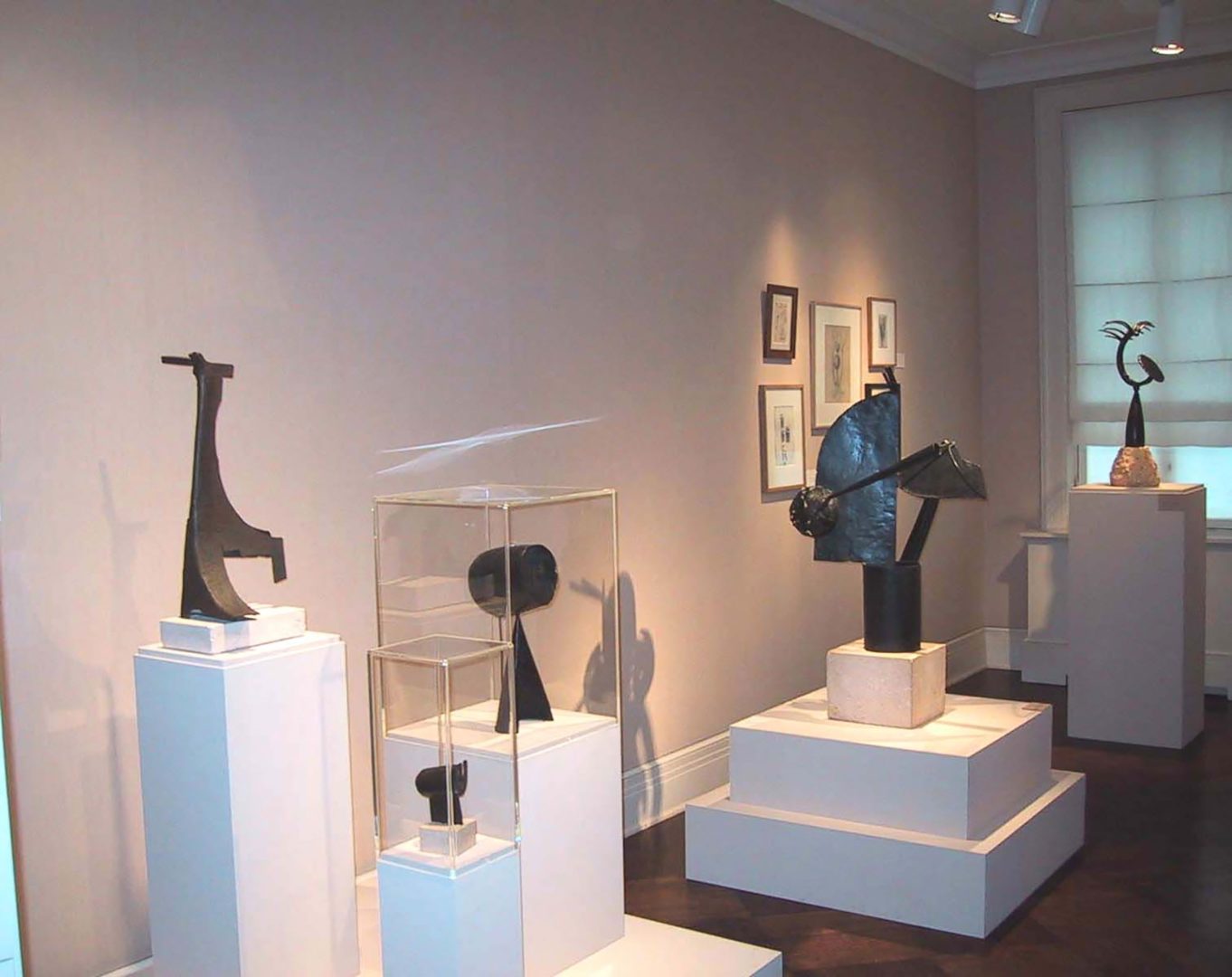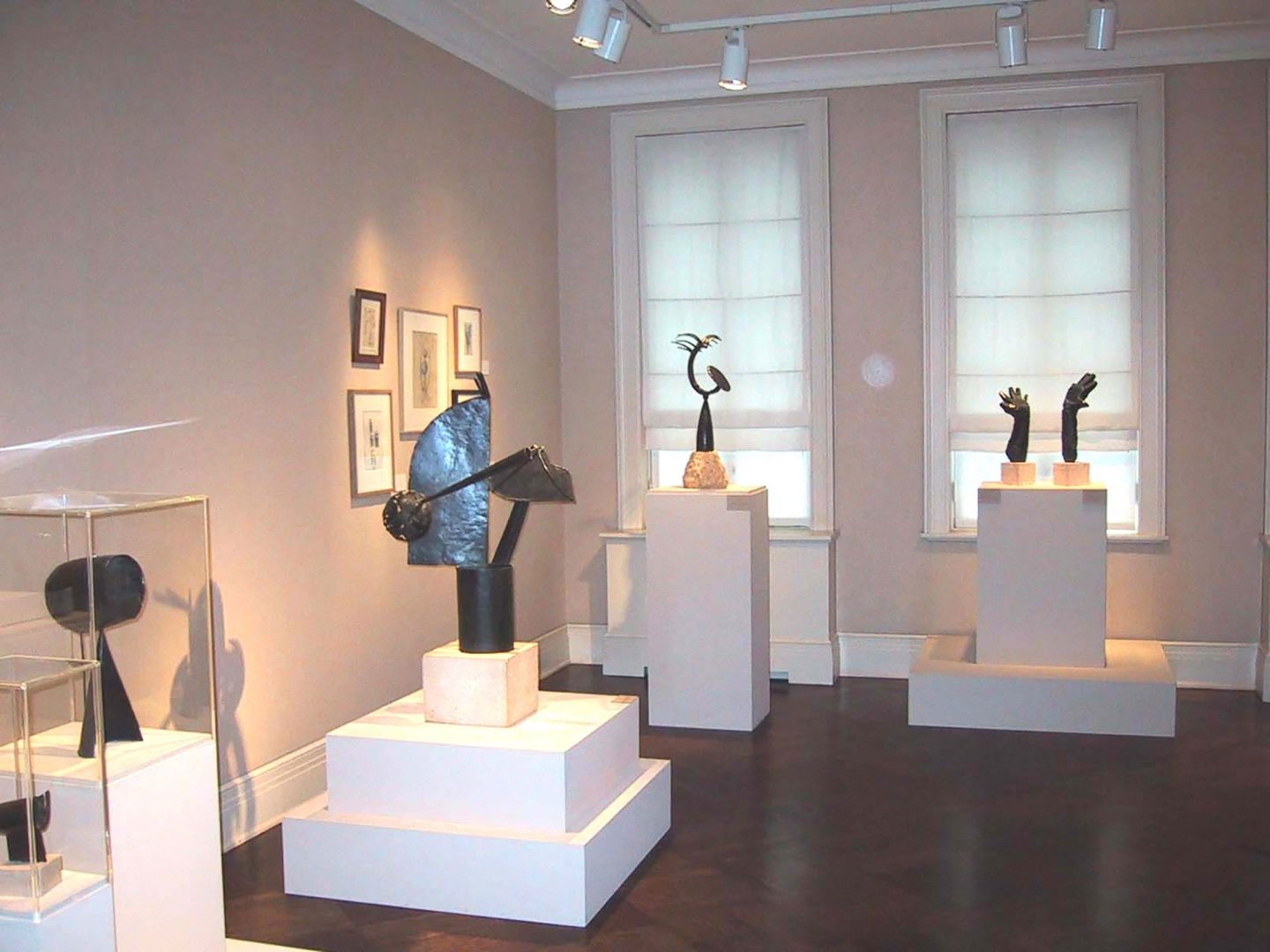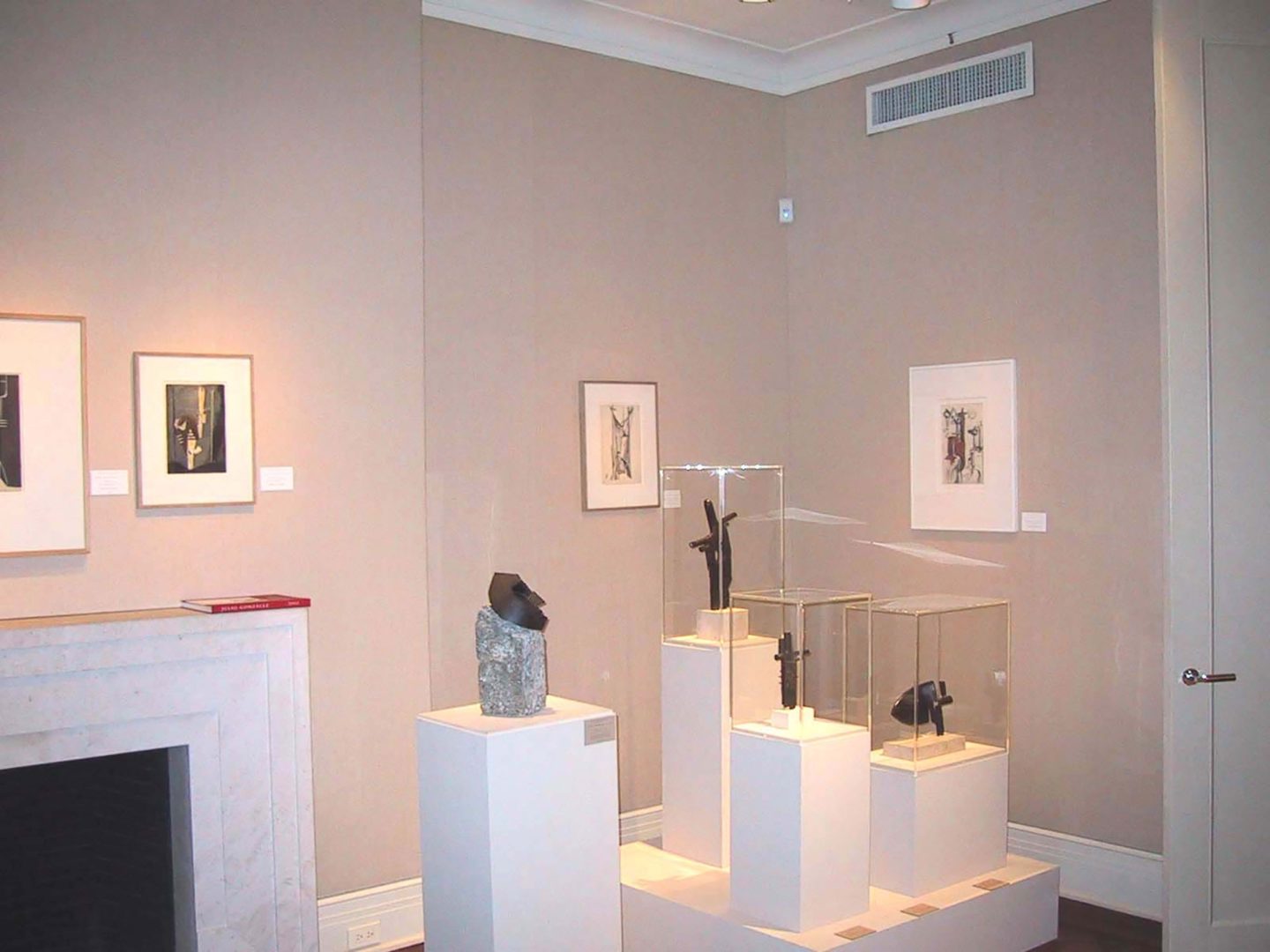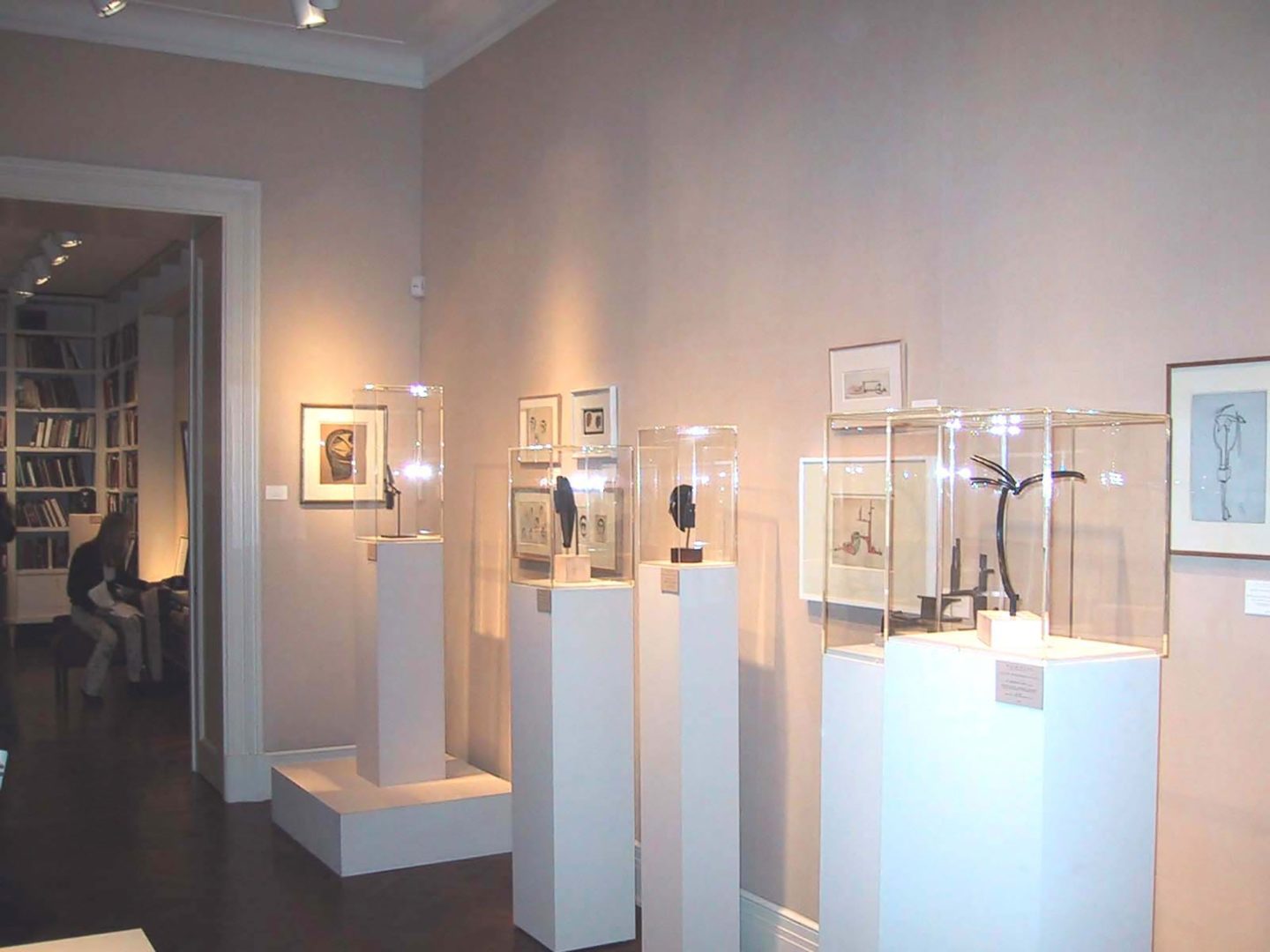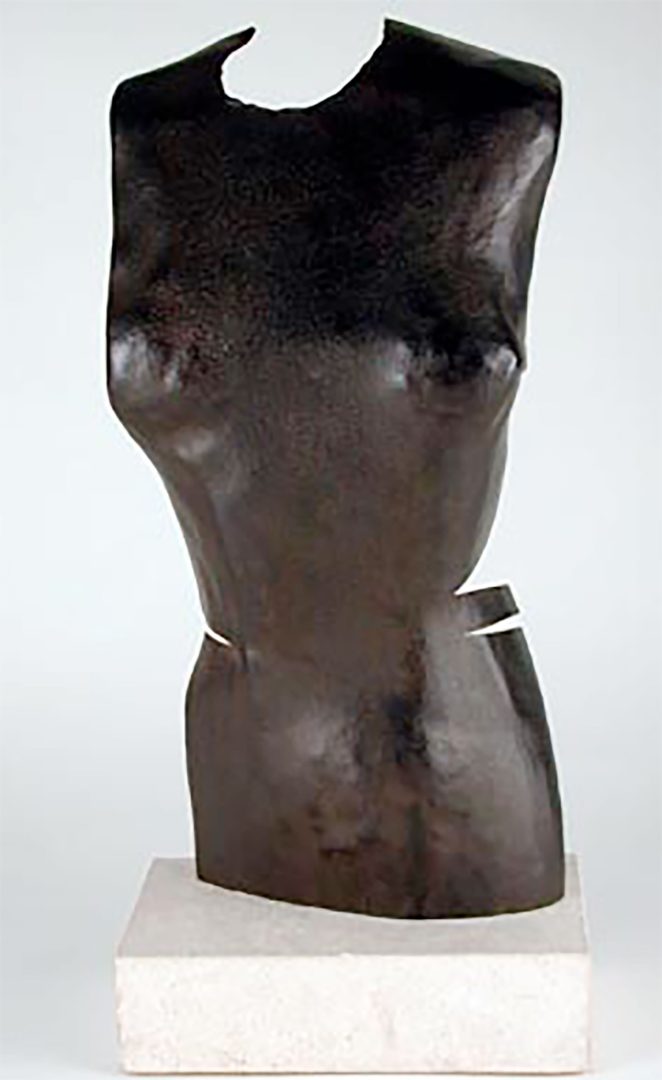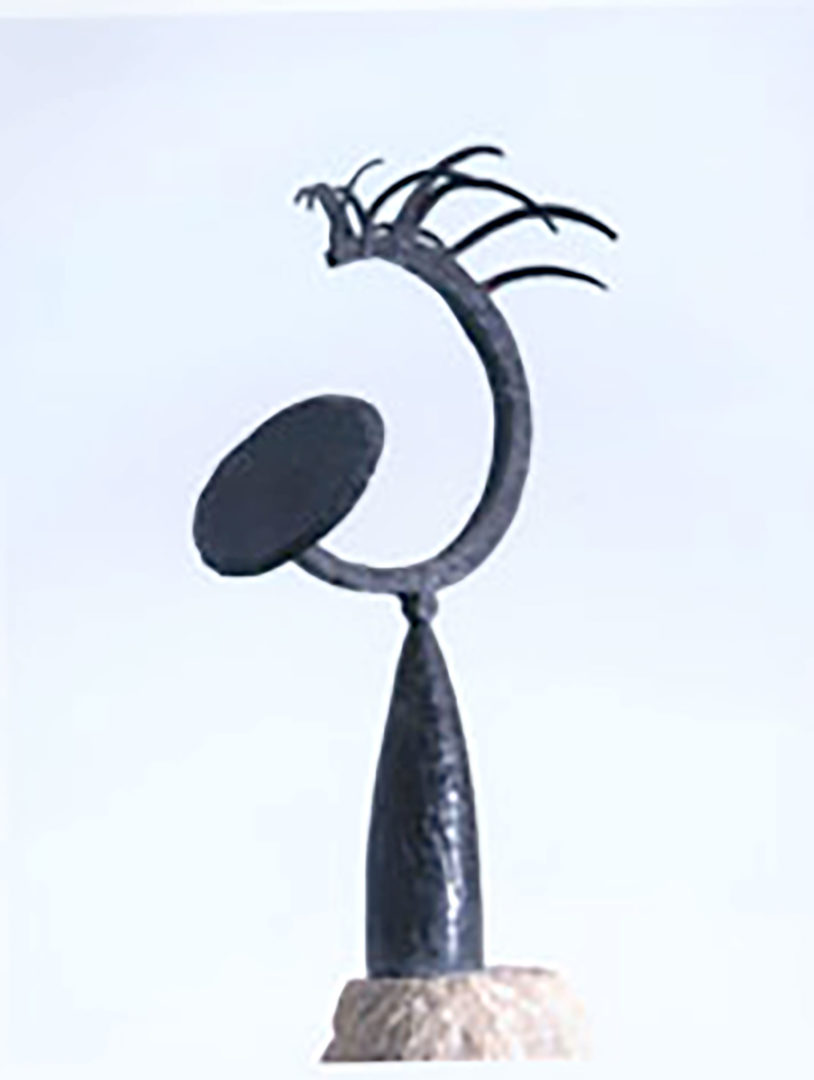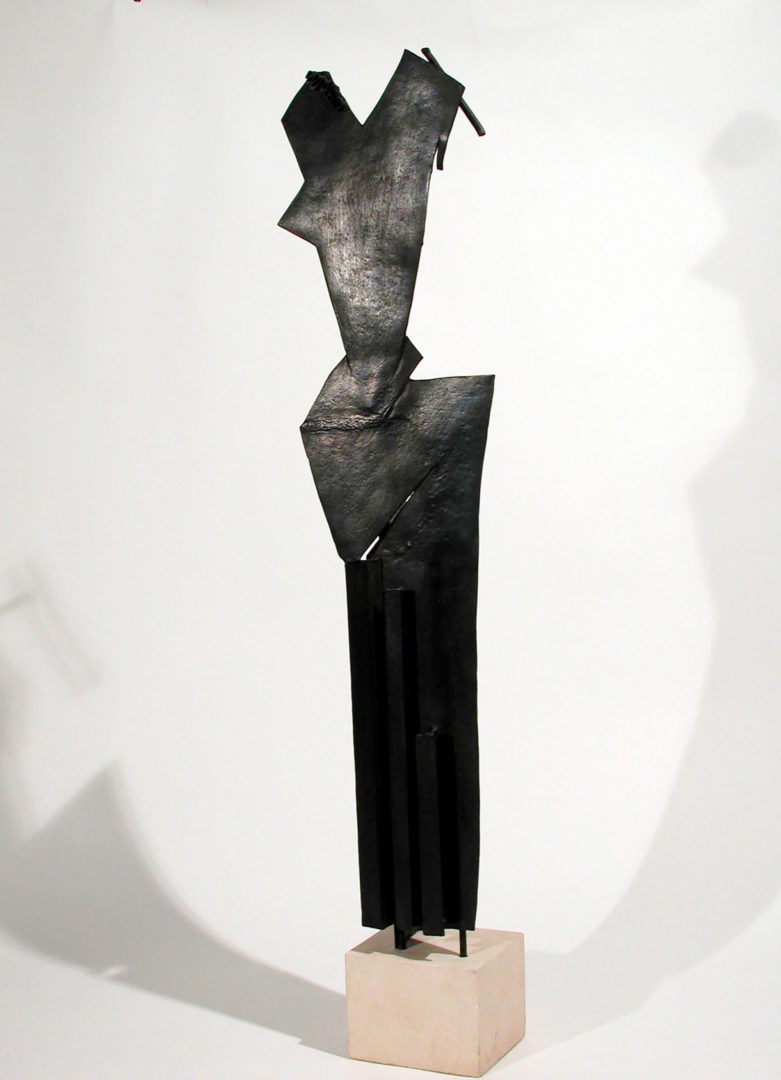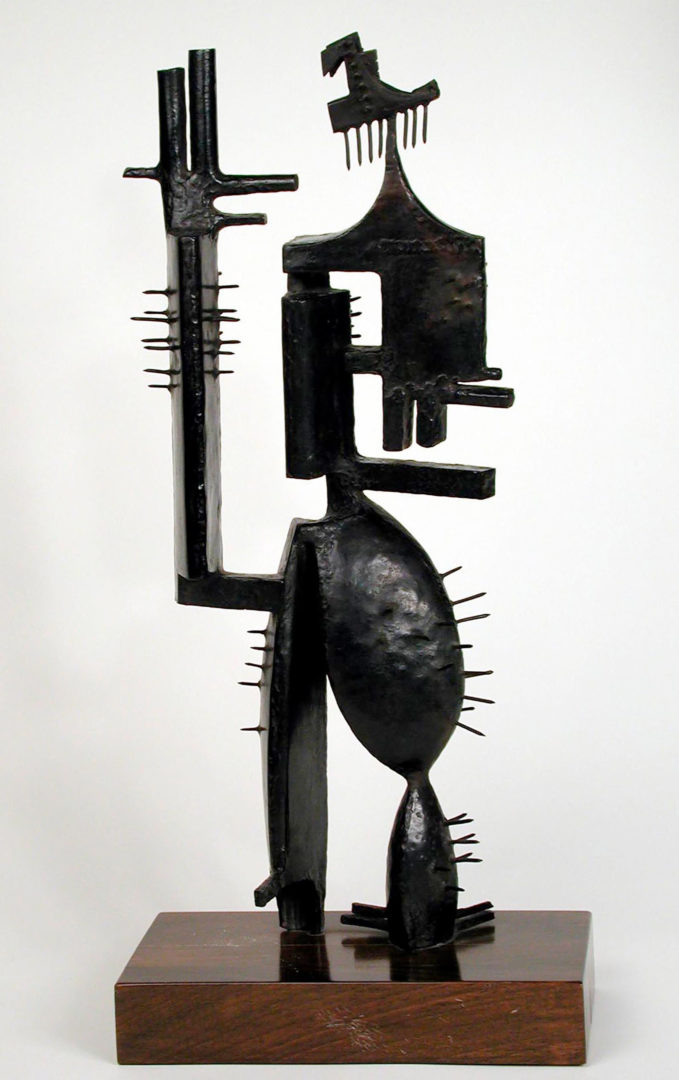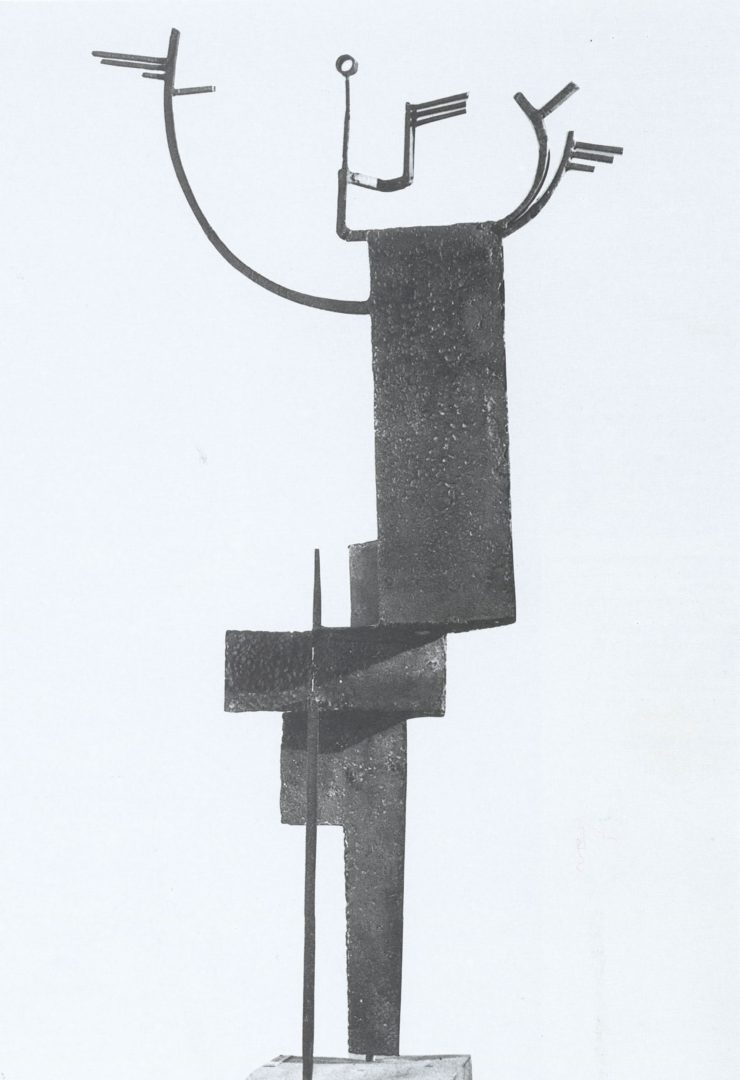An exhibition of approximately forty-five sculptures and fifty drawings by Julio González (1876-1942) will be on view at Dickinson Roundell Inc., 19 East 66th Street, New York, from May 6 to June 28, 2002. A fully illustrated catalogue, in both English and German, with an essay contributed by Marilyn McCully and a forward by John Richardson accompanies the exhibition. Marilyn McCully, an American art historian living in London, is a leading expert on twentieth century Spanish artists and collaborating author on the four volume ‘A Life of Picasso’ with John Richardson. John Richardson, Picasso biographer and renowned art historian, is the author of numerous articles and books and a contributor to The New York Review of Books and Vanity Fair.
Born in Barcelona in 1876, Julio González was proud of his Catalan heritage and, even though he spent the majority of his adult life in France, he always considered himself Catalan. He received his initial sculptural training from his father, a sculptor and metalworker, and he became a highly skilled foundryman and welder. In 1900, González sold his family studio and went to Paris where he spent time within the avant- garde circle of pre-war Europe. González was influenced by the artistic currents in Paris prior to World War II, including Constructivism, Abstraction, Cubism and Surrealism, but the Catalan artist was truly independent of any movement, and yet had elements of them all in his work.
The collaboration with Picasso between 1928 and 1932 completely transformed both artists’ work. This was certainly not their first association since Picasso had sought González’s technical advice and knowledge of acetylene welding before. However, it was as a direct result of this collaboration that González was finally able to realize his innate talent and to realize the artistic possibilities of new materials and new methods borrowed from both industrial technology and metalworking. The sculptures González made in the 1930s are his best and it was then that he pioneered a technique of working directly with metal. He is particularly known for his abstract forged and welded open-form constructions in iron, bronze and silver. This technique he developed of building constructions in space with welded iron forms has been termed ‘drawing in space’.
A highlight of the exhibition is the iron Masque “dit l’aimee” executed circa 1932-33. This work combines González’s earlier reliefs with his abstract cut outs to create a work that lies between two dimensional art and sculpture. Another feature of the show is the bronze figurative abstraction Monsieur Cactus (Homme Cactus) of 1939. This sculpture exemplifies the artist’s outrage at the Spanish Civil War. It is one of the few male gender sculptures in the artist’s oeuvre. The sense of solidity, durability and sturdiness that its forms evoke depict the strength and defiance of the Catalan people.
Another highlight is Femme dite “Les Trois plis” executed in 1931-32, which is striking in its strong silhouette. It is an innovative mix of collage and cut out sculpture. González uses Cubist tromp l’oeil games in the folds of the figure’s skirt while the upper body has a cut out Primitivist feel. The circa 1937 Daphné is one of González’s finest works in which the artist made use of everything he knew about Cubist, Surrealist and non-objective art. The overlapping planes in the body of the sculpture have echoes of Cubist and Constructivist art while in the head of the sculpture, González uses elements reminiscent of the Surrealist esthetic.
González used the human figure as a point of departure for abstraction. This is evident in Les amoureux II, of circa 1932-33, in which González pushes figuration to the very edge of abstraction. The viewer is challenged to understand the relationship between sculpture and title in this synthesis of simple geometric forms. Also included is the elegant bronze Le Reve/Le Baiser executed circa 1934. The ambiguity in the double titling of this work sets it apart as one of the great Surrealist works in González’s oeuvre.
González spent much of his career as a draughtsman and drawing served as the groundwork of his sculpture. There will be several drawings included in our exhibition including the 1940 pen and black ink on paper Femme a la longue chevelure and the pen and black ink and oil on paper Abstrait executed on March 10, 1941.
Along with Picasso, Brancusi and Giacometti, González is regarded as one of the foremost pioneers of modern sculpture. He opened up a new path for a younger generation of artists, including David Smith and Anthony Caro and has been called “the father of all iron sculpture of this century” by the American sculptor David Smith.
Julio González’s widely exhibited sculptures and drawings are in numerous public and private collections, including the Art Institute of Chicago, the Hirshhorn Museum and Sculpture Garden, Washington DC, IVAM/Centre Julio González, Valencia, the Museé National d’Art Moderne, Paris, the Museo de Arte Moderno, Barcelona, the Museum of Modern Art, New York, the Solomon R. Guggenheim Museum, New York, the Stedelijk Museum, Amsterdam and the Tate Gallery, London.
Dickinson was established in 1993 as a discrete alternative to buying and selling at public auction. We specialize in negotiating sales on a commission basis of important Old Master, British, Nineteenth Century, Impressionist, Modern, Post-War and Contemporary art and jewelry. Equally, we specialize in helping sellers dispose of art discreetly, efficiently and hassle-free. As well as dealing in fine art, our range of services includes: advice on the purchase and sale of paintings, works of art and jewelry at auction; appraisals; and curatorial assistance including advice and expertise on forming and maintaining a collection, cataloging, photography, framing, hanging, restoration, shipping and lighting. In addition to the gallery in New York, Dickinson has offices in London, Paris, Berlin, Geneva, Zurich, Scandinavia and Madrid. Together we offer a service throughout Europe and America that covers seven hundred years of visual art.

